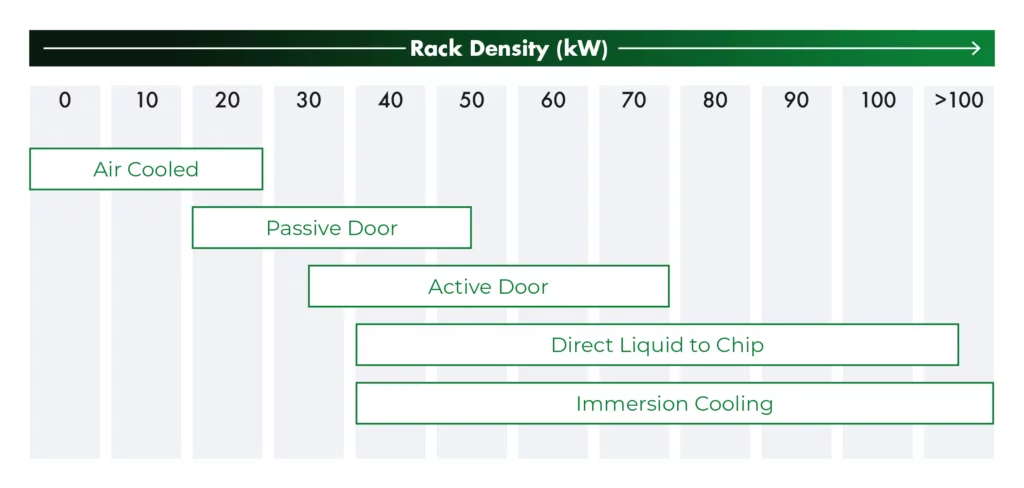Artificial intelligence (AI) and machine learning (ML) have emerged as powerful business tools in almost every sector. They are automating customer service, producing valuable insights, allowing companies to gain competitive advantage and improving their efficiency. This trend has accelerated to the point where AI, ML and the high-performance computing (HPC) systems that support them, have become essential to business operations.
There has also been a change in the computing architecture for AI applications, with the advent of Graphics Processing Units (GPUs). GPUs are optimised for training artificial intelligence and deep learning models as they can process multiple computations simultaneously.
This has caused a knock-on effect for data centre operators because the computing power required is significantly higher than needed for traditional IT infrastructure. Data centre operators therefore need to adapt to support the deployment of this new generation of infrastructure, with higher densities requiring new cooling technologies and hybrid systems.
Customers are now turning to liquid cooling because of its ability reject more heat, whether as a wholly liquid solution or more commonly deploying a hybrid of liquid and air. Deployment of these technologies greatly improves efficiency with reduced PUE and (WUE) and therefore reduces energy costs.
The graphic below gives an indication of densities supported by various cooling technologies.

Data centre racks have traditionally been air cooled, but the power density demands of AI mean that this approach is no longer sufficient to effectively support high density deployments. That said, air cooling is still required for systems that cannot totally use liquid, therefore requiring a hybrid solution. A mix of air and liquid systems in a deployment is key as the evolution to wholly liquid cooled systems progresses.
The rear-door heat exchanger approach brings that same technique to the rack, which is more efficient, more effective and can cool requirements greater than 20kW. Deployments can be either passive, with just a heat exchanger, or active with the incorporation of fans in the rear door. Some deployments will also use a combination to support individual racks.
The principle behind direct to chip liquid cooling (DLC) involves establishing a cooling loop where a cold liquid is dispatched to plates directly mounted on the CPU/GPU. These plates absorb the heat, which is then transferred to a Coolant Distribution Unit (CDU) and a heat exchanger. DLC typically deals with 70% of the heat therefore requiring a hybrid solution with air cooling to manage the remaining 30%.
Immersion cooling is an innovative and efficient method that involves submerging IT equipment such as servers in thermally conductive liquids also known as dielectric coolants. These coolants are non-conductive, which means they don’t harm the electronic components. This method of cooling is beneficial for heat-intensive equipment as the liquids are more effective conductors of heat and cool all the components in the servers as the equipment is completely immersed.
Immersion cooling offers significant benefits, less energy is required to cool the equipment because of the more efficient thermal contact with the devices and higher power densities well over 100kW per system.
At Evolution Data Centres sustainability is at the heart of everything we do, therefore deploying modular infrastructure that can support customer deployments to reduce energy consumption is vital.
Our data centres are designed with advancement in mind to be able to support both air and liquid cooled systems, as well as hybrid deployments to meet our customer’s needs. The facilities accommodate current customer deployments with flexibility to upgrade as technology advances.
We believe that carbon neutrality is the industry’s greatest challenge over the next decade and are passionate about sustainability. We operate with 100% renewable energy from solar, wind and geothermal sources, our construction methods ensure we deliver new data centre capacity with the minimum environmental impact. This is particularly important given the size and scale of the data centres we build and operate. Our experts design and deliver the technology that is most effective for today’s AI, ML and HPC applications. We ensure that the cooling systems in our data centres result in highly efficient and sustainable operation in-life.